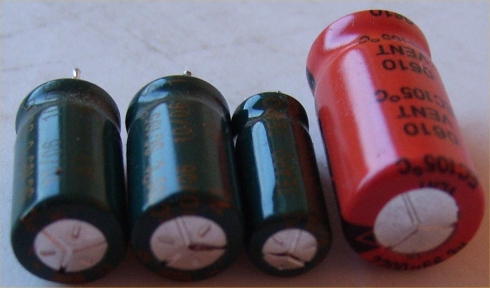Re: Crack & Stink Gigabyte GA7N400 Pro 2
update:
re-tested the psu and it started to smoke
so, looks like the crack sound, and the odor, was the caps blowing their vents?
didn't know that a psu could destroy a mobo, and assumed that they would all have over-current protection as a basic feature.
this is the first time that i've ever seen a psu die (and unfortunately, also "take-out" a mobo with it).
here is the pic of the caps:
two are domed, and the other two (teapo) have opened up

update:
re-tested the psu and it started to smoke
so, looks like the crack sound, and the odor, was the caps blowing their vents?
didn't know that a psu could destroy a mobo, and assumed that they would all have over-current protection as a basic feature.
this is the first time that i've ever seen a psu die (and unfortunately, also "take-out" a mobo with it).
here is the pic of the caps:
two are domed, and the other two (teapo) have opened up

Comment